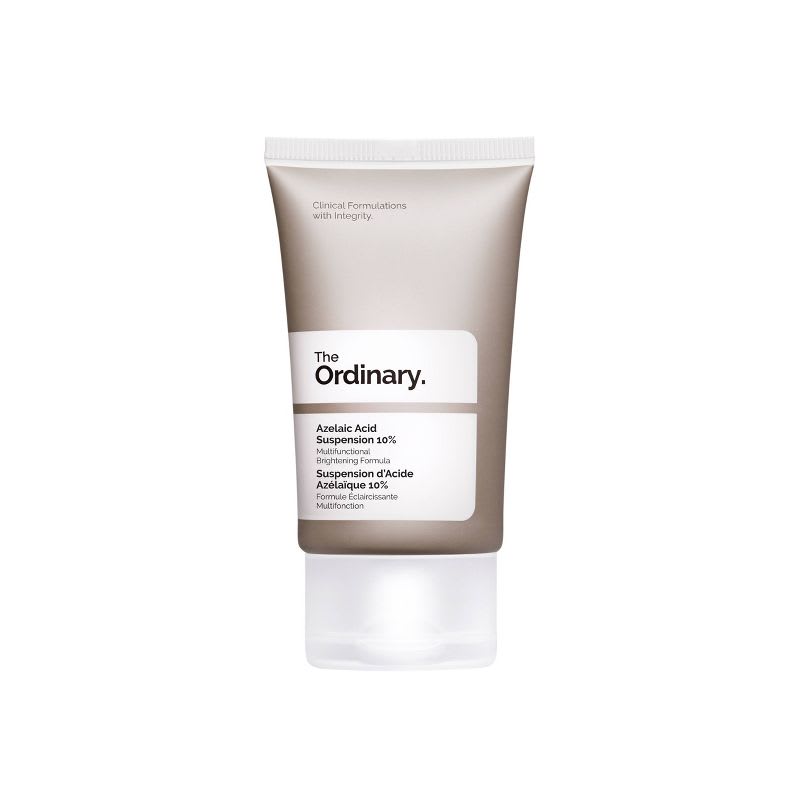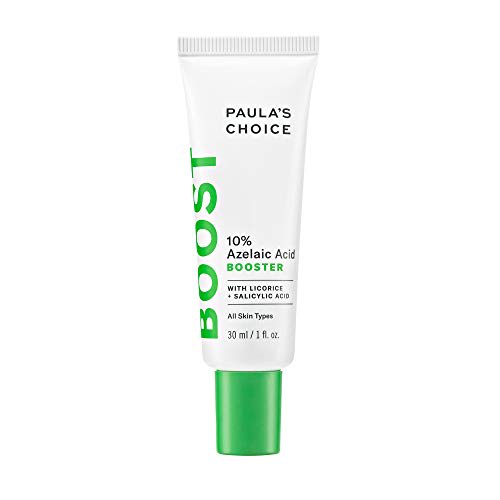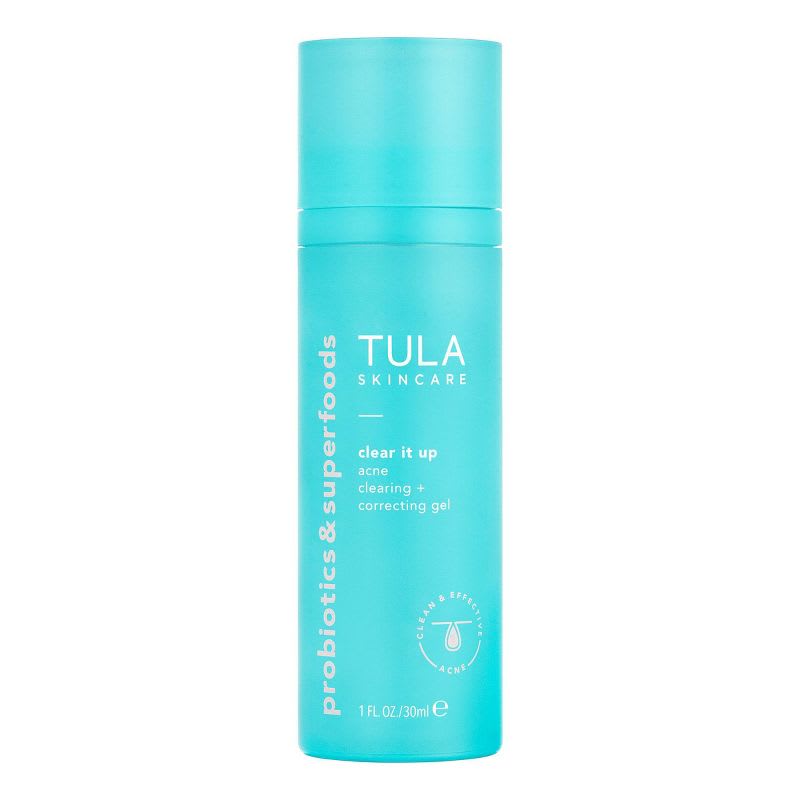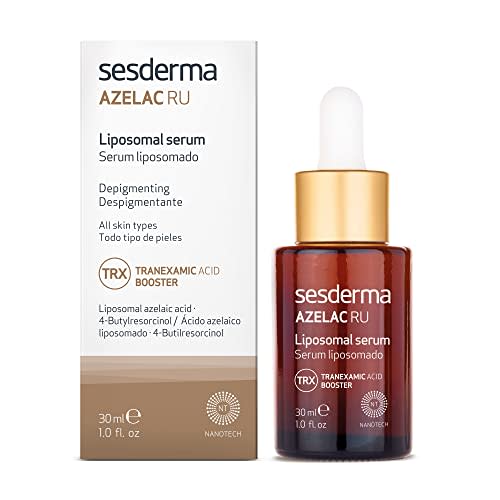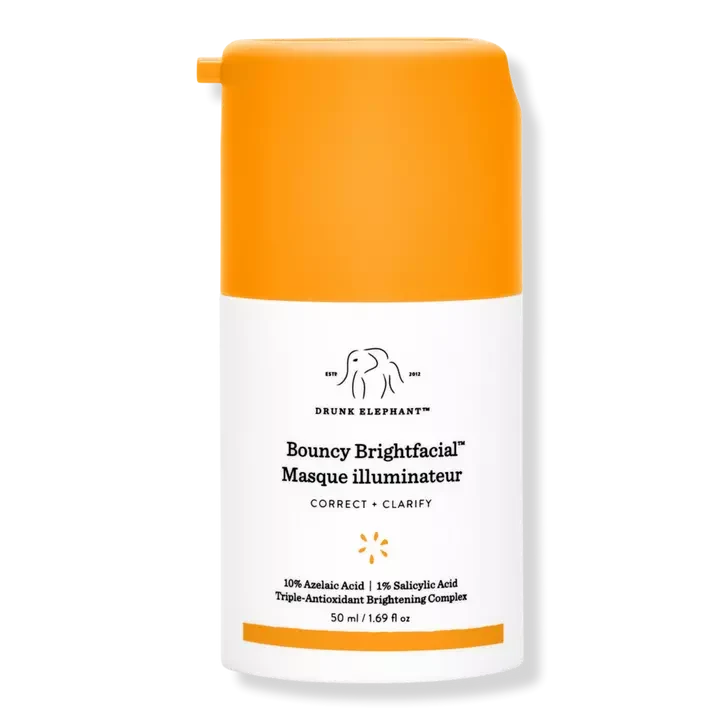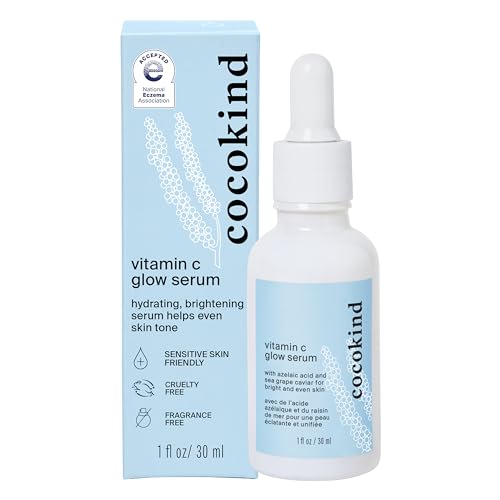If you struggle with acne, you’ve probably shopped around for pimple-fighting face washes, moisturizers and treatments that include active ingredients like benzoyl peroxide and vitamin C. But when it comes to keeping sensitive skin clear, azelaic acid is a more under-the-radar ingredient that helps avoid irritation, says Dr. Rachel Westbay, a board-certified cosmetic and general dermatologist at Marmur Medical. Azelaic acid not only works to unclog pores and prevent acne, but it also helps lighten dark spots and acne scars for a more even complexion.
I spoke with eight dermatologists about how azelaic acid works and how you can incorporate it into your skin care routine. I also compiled some azelaic acid products in line with our experts’ guidance and recommendations.
SKIP AHEAD What is azelaic acid and how does it work? | How I picked the best azelaic acid products | Best azelaic acid products | Why trust NBC Select?
Selected.
Best for acne-prone skin
Tula Clear It Up Acne Clearing and Tone Correcting Gel
$38.00
Amazon
Learn more
Show 4 More
Show Less
What is azelaic acid and how does it work?
Azelaic acid is a tyrosinase inhibitor (the enzyme responsible for making melanin), which helps to even out your skin tone and prevent and treat hyperpigmentation due to conditions like melasma, says Westbay. It can also lighten acne scars, dark spots (most often seen on darker skin tones) and red scars (most commonly seen on fair skin tones), according to Westbay.
Azelaic acid is also an antibacterial antioxidant that unclogs pores, reduces inflammation and treats acne. It’s milder than other acne-fighting ingredients like salicylic acid and adapalene, which makes it more suitable for those with sensitive skin, acne and rosacea, says Dr. Lindsey Bordone, a board-certified dermatologist and assistant professor of dermatology at Columbia University Medical Center. Plus, it’s one of the only pregnancy-safe acne treatments on the market.
Prescription-level azelaic acid is available at 15% and 20% strengths, and these have more research to back up their efficacy. However, you can also find over-the-counter options at strengths up to 10%. If your skin can tolerate it, try combining a lower-grade strength OTC option with other acne-fighting ingredients, which can be “much more effective than when [azelaic acid is] used alone,” says Westbay.
How I picked the best azelaic acid products
While shopping for OTC products that contain azelaic acid, experts recommend considering the following factors:
- Concentration: While prescription-strength products are usually best because they have higher concentrations of azelaic acid, OTC products that have a 10% strength or lower can still be effective, experts say.
- Formulation: The formulation you choose depends on your personal preference and how it fits into your skin care routine. Though typically found in serums, you can also find azelaic acid in cleansers, face masks, creams and gels.
- Additional ingredients: Depending on the specific skin concerns you’re targeting, consider products that pair well with azelaic acid, including those with skin-brightening ingredients like niacinamide and vitamin C, and hydrating ingredients like hyaluronic acid. Avoid layering this ingredient with harsher acids like alpha hydroxy acids (AHAs) and salicylic acid because it can compound irritation, experts say.
Best azelaic acid products of 2024
Below, I’ve compiled our experts’ favorite products containing azelaic acid, as well as highly rated options from expert-recommended and NBC Select staff-favorite brands.
Best serum overall: The Ordinary Azelaic Acid Serum
This vegan and cruelty-free cream from The Ordinary is a favorite among our experts because it helps improve the appearance of blemishes and dark spots. The serum, which is also one of our favorite acne and melasma treatments, contains 10% azelaic acid, and it’s gentle enough to use up to twice a day, according to the brand.
Best for dark spots: Paula's Choice 10% Azelaic Acid Booster
This 10% azelaic acid face serum brightens dark spots, evens out skin tone and improves hyperpigmentation caused by breakouts, says Dr. Joshua Zeichner, director of cosmetic and clinical research at Mount Sinai Hospital. It’s noncomedogenic and hypoallergenic, so it’s safe for sensitive skin. Westbay also recommends the brand’s Niacinamide + Azelaic Acid Duo, a 2-in-1 product that targets acne, minimizes pores, improves dullness and lessens the appearance of uneven skin tone and texture, she says.
Best for scars: Topicals Faded Serum
This Topicals spot treatment fades scars and hyperpigmentation using azelaic acid, tranexamic acid and niacinamide. This is a favorite of our NBC Select editors, who tried this serum over the course of two months on scars and hyperpigmentation — they say they noticed their dark spots became lighter and their scars had begun to fade almost entirely. The brand recommends using this serum at night after washing your face and before your moisturizer. Since it has tranexamic acid, avoid using it with AHAs, BHAs and retinols since it can irritate your skin, according to the brand.
Best with vitamin C: Naturium Azelaic Topical Acid 10%
Naturium, a favorite brand among NBC Select staff, makes some of our favorite body lotions and salicylic acid products. This azelaic acid serum has niacinamide, vitamin C and coffee seed extract, which work together to even out skin tone, gently exfoliate and balance excess oil, according to the brand. The brand recommends using 1-2 pea-sized drops in the morning and at night, and gradually increasing the amount you use over time (depending on how much your skin can tolerate). The serum is available in both 1-ounce and 2-ounce sizes.
Best for irritated skin: Peach Slices Redness Relief Azelaic Acid Serum
This serum from Peach Slices — the brand behind some of our favorite pimple patches — has 10% azelaic acid, as well as panthenol, a humectant that helps the skin retain moisture. Effective for both your nighttime and daytime routine, the serum also helps reduce signs of redness and rosacea thanks to ingredients like hydrating green algae and soothing cica, according to the brand.
Best for redness: The Inkey List Azelaic Acid Serum
This azelaic acid serum comes recommended by Dr. Erum Ilyas, a board-certified dermatologist at Schweiger Dermatology. It has 10% azelaic acid and you can apply it twice a day, according to the brand. If redness is a major concern, The Inkey List’s serum has microfine green-colored particles that can help mask redness, as well as 0.3% allantoin, which is a chemical compound that can help soothe the skin, according to The Inkey List.
Best brightening: Cocokind Vitamin C Glow Serum
This serum from Cocokind, one of our favorite women-owned brands, combines the brightening effects of azelaic acid and vitamin C, plus the hydrating power of hyaluronic acid. The lightweight serum also has the National Eczema Association Seal of Acceptance, which means it’s suitable for sensitive skin. The serum is also highly rated, with a 4.7-star average rating from over 1,300 reviews at Target.
Best for acne-prone skin: Tula Clear It Up Acne Clearing and Tone Correcting Gel
This azelaic acid gel pairs its ingredients with niacinamide, which helps brighten your skin’s tone and improve texture, says Dr. Hadley King, a board-certified dermatologist in New York City. It also has 2% salicylic acid that keeps acne at bay, probiotics that soothe and calm inflammation and hyaluronic acid that helps with hydration, according to the brand.
Best face mask:Drunk Elephant Bouncy Brightfacial Brightening Mask
Drunk Elephant makes some of our favorite expert-recommended cleansing balms and alpha hydroxy acid products, and this gel-cream from the brand has 10% azelaic acid to reduce dark spots and redness. It also has 1% salicylic acid to keep blemishes at bay, and a blend of brightening ingredients to tackle hyperpigmentation, according to Drunk Elephant. The brand recommends applying 2-3 pumps of the cream as the last step of your nighttime or daytime skin care routine.
Best for melasma:Sesderma Azelac Ru Facial Serum
This Sesderma serum is one of Westbay’s favorites for excessive pigmentation on the skin. It can tackle melasma and post-inflammatory hyperpigmentation from acne scars, too, she says. The serum is a combination of several active ingredients, including azelaic acid, retinol and vitamin C. The formula also contains tranexamic acid, a topical treatment that “works particularly well for [treating] discoloration resulting from UV light,” says Westbay.
Best cleanser: Urban Skin Rx Even Tone Cleansing Bar
This 3-in-1 cleanser, mask and exfoliator contains azelaic acid, niacinamide and kojic acid, another tyrosinase inhibitor that can lighten dark spots. You can apply the cleanser on its own or use the included exfoliating sponge to massage it onto your skin and leave it on for a few minutes, according to the brand. You can also use it as a brightening mask and leave it on for 3-5 minutes before rinsing it off with cold water, according to Urban Skin Rx. The cleansing bar has a 4.4-star average rating from over 7,100 reviews on Amazon.
Frequently asked questions
Who should use azelaic acid — and who should avoid it?
Azelaic acid is a safe and gentle option for those who have sensitive skin, are in their early teens or are pregnant or breastfeeding, according to our experts.
Even though it’s a milder option, people with very sensitive skin should still be cautious when using this ingredient since they may experience some stinging, burning and even worsening of hyperpigmentation, according to Dr. Ronda Farah, a board-certified dermatologist at the University of Minnesota Medical School and M Health Fairview. “That's probably the biggest issue because if you get a rash going, it can leave dark spots instead of what you actually intended it to do, which is to lighten and brighten the skin,” says Farah.
Azelaic acid also won’t do much for those with severe cystic acne. “It might help a little bit with the pigment that's left over after an acne lesion clears, but for someone who has deeper cystic acne, [azelaic acid] isn’t going to penetrate that far into the skin,” says Bordone. To combat cystic acne, our experts recommend stronger acne-fighting ingredients like benzoyl peroxide, which inhibits bacterial growth, and retinoid gels like adapalene to reduce clogged pores.
How often can you use azelaic acid?
You can use azelaic acid one to two times per day, but you should start by using it once a day at night, experts told us. If your skin tolerates it well for a few weeks, you can start using it twice a day. Pair it with a gentle cleanser as well as a good moisturizer and sunscreen every morning.
What percentage of azelaic acid is most effective?
Generally, prescription treatments with 15% to 20% azelaic acid are the most effective, according to our experts. Most OTC azelaic acid treatments will have a weaker 10% concentration of the ingredient, but it should be used in conjunction with other treatments to actually be effective.
“I typically recommend azelaic acid in combination with other products to combat these issues, as I find it much more effective than when used alone,” says Westbay. “It's also important to note that some skin types and skin conditions, particularly of a certain severity, will require a prescription-strength concentration and so require a visit to a board-certified dermatologist.”
What ingredients can you layer with azelaic acid?
Most ingredients are fine to keep using when introducing azelaic acid to your routine. It’s safe to use alone or to pair with other soothing and brightening ingredients like niacinamide (a natural anti-inflammatory) and hyaluronic acid, which locks in moisture, according to Zeichner. However, our experts generally advise against layering harsher ingredients like beta hydroxy acids (BHAs), which include salicylic acid, and alpha hydroxy acids (AHAs) like glycolic acid, because it can increase the chances of dryness and irritation.
“Typically, you want to either remove other irritating things from the regimen or at least separate them, so you can use one thing in the morning and another at nighttime,” says Farah.
Although azelaic acid doesn’t make you more sensitive to the sun like other acids, Zeichner still recommends wearing sunscreen when incorporating the ingredient in your routine. “If you are using azelaic acid, you definitely should be religious about applying sunscreen — even low levels of UV light can promote pigmentation and undo what you have treated,” he says.
How long does azelaic acid take to work?
After starting prescription-strength azelaic acid, you should see some improvement anywhere between six weeks and three months, says Farah. It can take longer to see improvement with OTC products — about three to four months, according to our experts.
When it comes to brightening the skin and lightening any dark spots and hyperpigmentation, prepare to wait for results. “Azelaic acid is very slow and very weak — you're looking at probably six months to a year to see a true effect and it would be fairly minimal,” says Farah.
While the mildness of azelaic acid makes it ideal for sensitive skin types, it can also be a drawback. “The biggest issue I hear from patients is that it just doesn't work,” says Dr. Aaron Secrest, a board-certified dermatologist and assistant professor of dermatology at the University of Utah. “It’s one of the weaker acids, which is nice because of fewer side effects like dryness, but it’s also not as helpful at clearing up the skin as stronger acne-fighting ingredients,” he says.
Meet our experts
At NBC Select, we work with experts who have specialized knowledge and authority based on relevant training and/or experience. We also take steps to ensure that all expert advice and recommendations are made independently and with no undisclosed financial conflicts of interest.
- Dr. Rachel Westbay is a board-certified dermatologist at Marmur Medical in New York City.
- Dr. Lindsey Bordone is a board-certified dermatologist and assistant professor of dermatology at Columbia University Medical Center. She specializes in adult general dermatology, managing all conditions of the skin, hair, and nails.
- Dr. Joshua Zeichner is the director of cosmetic and clinical research at Mount Sinai Hospital.
- Dr. Hadley King is a board-certified dermatologist in New York City.
- Dr. Erum Ilyas is a board-certified dermatologist at Schweiger Dermatology. Dr. Ilyas specializes in adult and pediatric medical dermatology, cosmetic dermatology and skin cancer treatment.
- Dr. Ronda Farah is a board-certified dermatologist at the University of Minnesota Medical School and M Health Fairview.
- Dr. Aaron Secrest is a board-certified dermatologist and assistant professor of dermatology at the University of Utah. He is the creator of medicalsecrets.com offering practical skin care advice from an expert.
Why trust NBC Select?
I’m an updates editor at NBC Select who has written a variety of skin care stories, including treatments for cystic acne, keratosis pilaris and dark under-eye circles. For this article, I spoke to eight dermatologists about how azelaic acid works and highlighted their recommendations for the best products to consider.
{{data.menu.name}}
- {{#data.menu.menuItems}}
- {{text}} {{/data.menu.menuItems}}
Catch up on NBC Select’s in-depth coverage of personal finance, tech and tools, wellness and more, and follow us on Facebook, Instagram, Twitter and TikTok to stay up to date.
